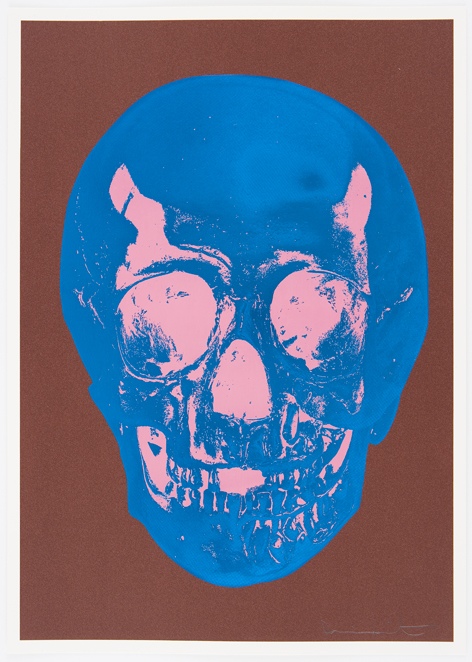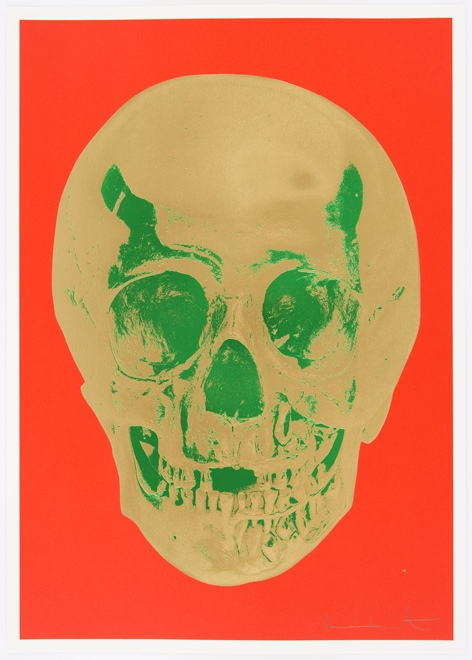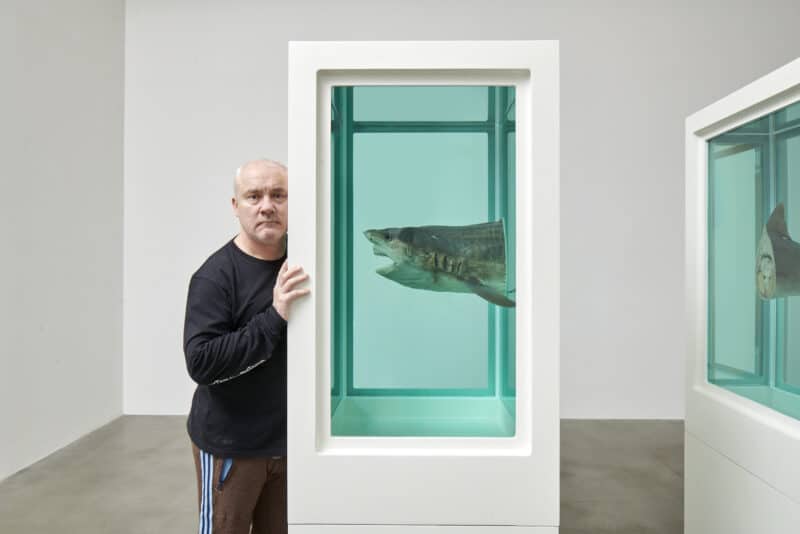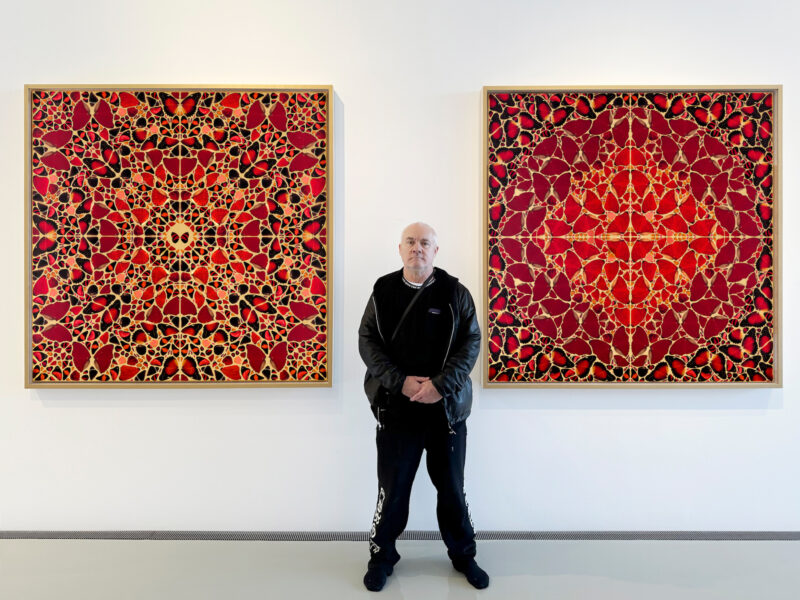
Milk Chocolate Brown True Blue Bubblegum Pink Skull Silkscreen,glaze and foilblock on 410gsm Somerset Satin Edition of 50 Signed and numbered Published by Paul Stolper and Other Criteria 2012

Cerulean Blue Pigment Yellow Royal Red Pop Up Skull Silkscreen,glaze and foilblock on 410gsm Somerset Satin Edition of 50 Signed and numbered Published by Paul Stolper and Other Criteria 2012

Time Bright Orange African Gold Emerald Green Pop Up Skull Silkscreen,glaze and foilblock on 410gsm Somerset Satin Edition of 50 Signed and numbered Published by Paul Stolper and Other Criteria 2012
30th March – 28th April, 2012
Paul Stolper Gallery is to present Damien Hirst’s ‘Utopia’ an exhibition of six new inkjet and foil block prints depicting rows of either pills, diamonds or cigarettes arranged in metal cabinets, together with ‘Till Death Do Us Part,’ a series of ten foil block skulls on brightly coloured silkscreened paper.
Utopia can be both a real or imaginary society, place, or stateconsidered to be perfect or ideal. In religious terms it is often described as a ‘garden of delight’ that promises an exit from the cycle of life and death. In this exhibition, Hirst continues his ongoing exploration of the role of science and religion in modern life and his works illustrate the pursuit of the Utopian ideal and expose the ultimately flawed nature of this pursuit.
In ‘Utopia’ vibrant multi-coloured pills are laid out on shelves that are foil blocked in silver. Here the science of medicine is tendered as one method of prolonging life, one of four belief systems through which Hirst channels his art, the others being love, art and religion. The geometric composition and the ‘array of tablets create a contrast between panacea and the obsessive repetition of the object toward an image of hyperbolic dependency’ (Mario Codognato, Warning Labels in Damien Hirst; Museo Archeologico Nazionale pg. 41).With each chemical intervention, the pills promise youth, happiness and freedom from pain. And yet in two other works ‘Black Utopia’ and ‘Black Heaven-Nite Time,’ where all the pills are black, the opposite is suggested, death is inevitable and the Utopian pursuit flawed. The works in ‘Till Death Do Us Part,’ printed in the same seductive candy pop colours of the pills anddisplayed alongside the pill cabinets, serve as a memento mori, the skulls further highlighting the fact that medicine, although an agent of healing, also alters perception and is ultimately ineffectual in the face of death.
‘Gold Tears’ and ‘Silver Tears’ depict rows of brilliant diamonds on shelves foil blocked in gold and silver. Diamonds, the ultimate symbol of desire, love, perfection and indeed the eternal, are nonetheless inextricably linked with loss, memory and melancholy. The desire and accumulation of riches cannot redeem a life, and like medicine, these inadequate efforts to escape death are forever doomed. Similarly, ‘Hell’ shows rows of stubbed-out cigarette ends and a single Cuban cigar. These objects embody the contradiction between desire, pleasure and death. The ashes recall a graveyard and the cigarette stubs create a ‘feeling of arid post-humanity in the most expansive way’ (Brian Dillon, Ugly Feelings in Damien Hirst, Tate 2012, pg 27). The cigarettes, now expired, are an image of dystopia and a reminder of mortality.
Prints and printmaking hold an important position in Hirst’s artistic output, and Utopia reflects this constant investigation into and re-invention of techniques and medias. The use of metallic foilblocking onto inkjet transforms the print, unremittingly drawing the viewer in with the bright colours and shimmering surfaces. Objects such as pills, diamonds and cigarettes are presented as luxury items on silver foiled shelves. And yet, the repetition democratizes the objects, and cigarette butts in their complete banality, are displayed alongside diamonds. While seductive it remains superficial, which is perhaps similar to the unrelenting desire to escape death and to achieve some kind of Utopia.










